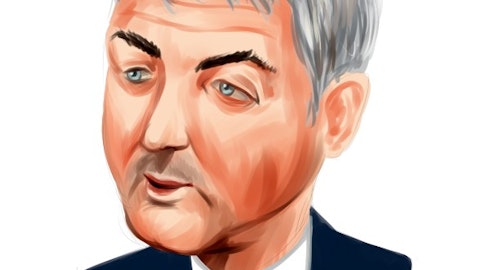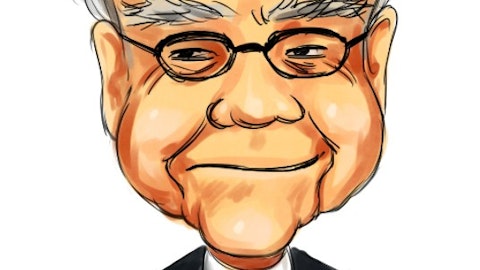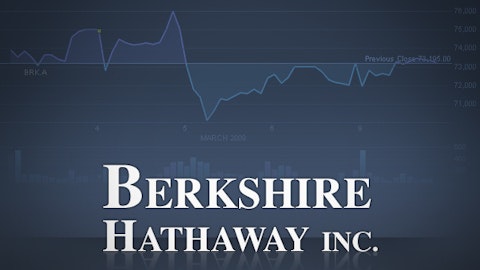
According to its earnings release, Procter & Gamble’s net income rose 6% to $2.57 billion from $2.41 billion in the same quarter last year, while net revenue rose 2% to $20.59 billion from $20.19 billion. Its smaller oral care-focused rival Colgate-Palmolive Company (NYSE:CL) reported a 22% drop in quarterly earnings to $460 million from $593 million a year ago, despite the 2.5% increase in net sales to $4.31 billion from $4.20 billion. Meanwhile, Unilever’s revenues grew by just 0.2% to $15.92 billion for the three months ending March.
The Procter & Gamble Company (NYSE:PG) increased prices in its beauty and grooming segment by 1% and 3%, respectively, but net sales fell by 2% in each of these units to $4.76 billion and $1.93 billion respectively. Prices in the health care unit increased by just 1%, and the unit reported the strongest growth figures. Prices in fabric and home care did not increase, but this segment, which is the company’s biggest source of revenue, failed to show any growth in terms of revenues. However, it did report a 3% volume growth. Baby and family care’s net sales rose 3% to $4.27 billion as prices were increased by 2%.
| Procter & Gamble’s segments sales table: | ||
|---|---|---|
| SEGMENTS | SALES (in billions) | CHANGE |
| Beauty | $4.76 | -2% |
| Grooming | $1.93 | -2% |
| Health Care | $3.27 | 8% |
| Fabric and Home Care | $6.58 | 0% |
| Baby and Family care | $4.27 | 3% |
Meanwhile, Unilever plc (ADR) (NYSE:UL) increased prices in personal care and home care units by 2.6% and 3.9%, respectively, while both segments reported strong growth. Net sales in the food segment fell by 5.4% to $4.41 billion as prices increased by 0.9%. In refreshments, prices rose 3.9% and sales fell by 0.9% to $2.75 billion.
| Unilever’s segments sales table: | ||
|---|---|---|
| SEGMENTS | SALES (in billions) | CHANGE |
| Personal Care | $5.78 | 3.60% |
| Foods | $4.41 | -5.40% |
| Home Care | $2.97 | 3.50% |
| Refreshments | $2.75 | -0.90% |
Unilever plc (ADR) (NYSE:UL) recorded $6.80 billion in revenues from developed markets and $9.24 billion from emerging economies. The latter continue to drive the company’s growth in the current quarter, as in the previous seven, Unilever achieved double digit growth numbers in the emerging markets — this time it was 10.4%.
The Procter & Gamble Company (NYSE:PG) is currently more focused on cutting down costs than on growing in emerging markets, despite realized growth in these markets, particularly in Brazil and India. The growth numbers mentioned above in the health care and baby care segments were caused by strong growth in developing markets.
Colgate-Palmolive Company (NYSE:CL) also posted good numbers for the Asia and Africa regions, where its sales rose 8.5% to $248 million, which represents the largest percentage increase in sales in all of its geographic markets.
Hindustan Unilever plc (ADR) (NYSE:UL) has delivered stellar performance by posting a 15% increase in net profits to $145.1 million, far above the market’s expectations. Hindustan Unilever plc (ADR) (NYSE:UL)operates as a separate unit of Unilever and is the market leader in India’s enormous FMCG sector. India is home to 1.3 billion people, which makes it the second most populous country of the world. With a rising middle class, the market for consumer goods is $42 billion. When it comes to this country, Hindustan Unilever is a much bigger player than Procter & Gamble. The latter has around 2.5 million sales outlets in India, while the former boasts more than 6 million.
Unilever, which currently has 52.5% shares of Hindustan Unilever, now aims to buy further shares by spending as much as $5.4 billion in what could be the biggest ever acquisition by a multinational company in India. By doing so, Unilever will increase its stake to 75%; this is the maximum allowed under Indian laws.
Unilever plc (ADR) (NYSE:UL) is betting billions on Hindustan Unilever, and I believe that it is a safe bet. Although there are dozens of smaller rivals in India, but Hindustan Unilever is better positioned. It has been operating in the country for more than a century — i.e., before the creation of India. It knows the market better than its rivals through years and years of successful operations in both rural and urban parts of the country. Its dominance is well established. The company’s growth numbers are often taken as a reflection of the growth of India’s consumer goods sector.
In the last six months, Unilever plc (ADR) (NYSE:UL) has outperformed Procter & Gamble and Colgate. Both Unilever and Procter & Gamble have yields of more than 3%, but Procter & Gamble is relatively cheaper with a lower price-earnings ratio. Procter & Gamble has a rich history of regularly increasing its dividends, which has recently been raised by 7% to $0.6015 for the quarter. The company’s stock took a hit after it released its earnings; its shares dropped by 5.9%. FMCG companies are generally considered safe investments for those looking to add low-risk-modest-returns firms to their portfolio; therefore the current dip presents a buying opportunity. On the other hand, Colgate-Palmolive Company (NYSE:CL) generates a significantly higher return on assets (ROA) and equity (ROE) than its rivals, but despite its decline, the shares are still considerably more expensive than Procter & Gamble’s.
The article Unilever Takes the Spotlight in Emerging Markets originally appeared on Fool.com and is written by Sarfaraz Khan.
Copyright © 1995 – 2013 The Motley Fool, LLC. All rights reserved. The Motley Fool has a disclosure policy.



